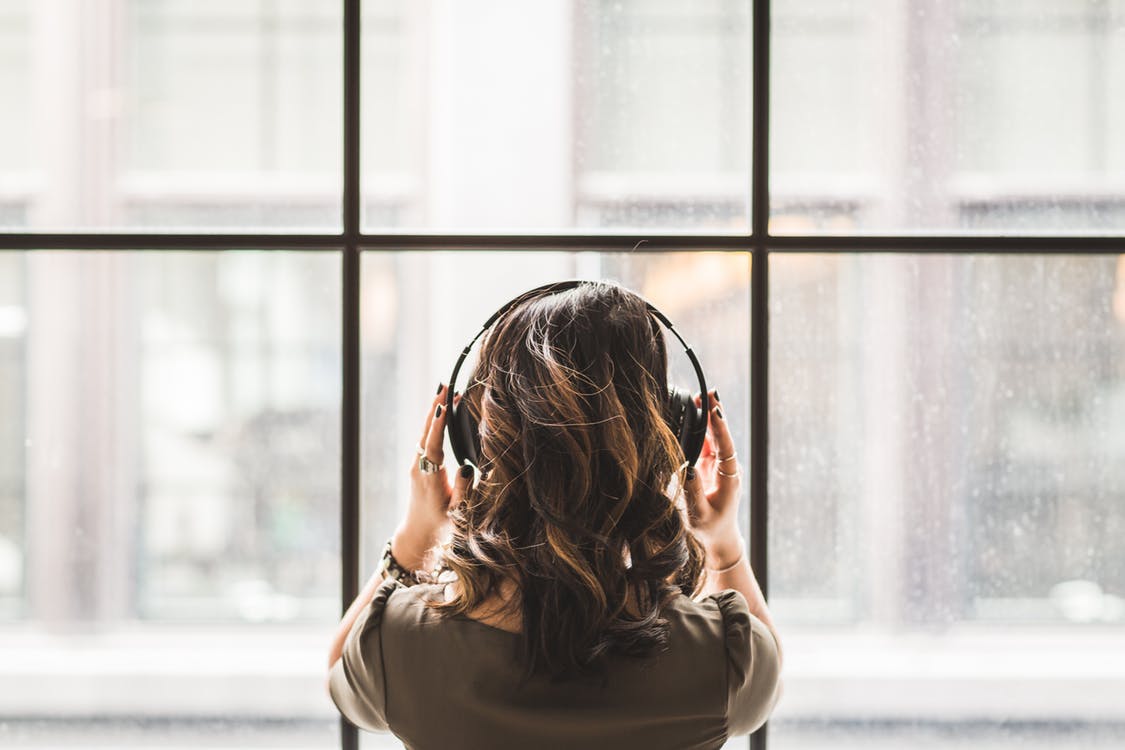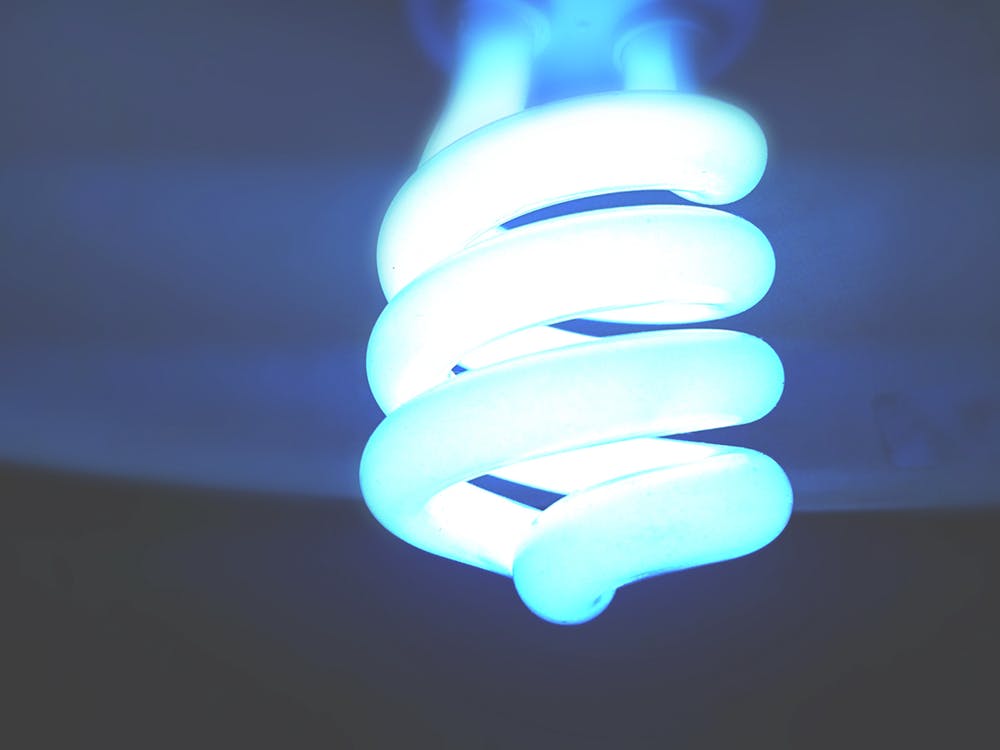Fibro Fix Blog

Do You Really Have Fibromyalgia? 1
Are you one of millions of individuals silently suffering from widespread pain and fatigue?
Health Benefits of Grounding (Earthing) 0
Syncing your bare toes into wet grass, dirt, sand, or water is the latest trend in wellness. Known as “earthing” or “grounding,” when skin comes into contact with the ground, the human body becomes a sponge that soaks up negatively-charged electrons from the earth. This practice is quickly earning recognition as a novel way to protect your health and combat the insults of our current lifestyles. The modern concept of earthing made its debut in 2010 with the release of Clint Ober’s book, Earthing: The Most Important Health Discovery Ever? Nearly 12 years earlier Ober, a retired pioneer of the American cable TV industry, discovered that the same system of grounding used to stabilize telecommunications and wires could also stabilize the atoms in the human body, improving the function of all body systems.
Grounding has been practiced since the beginning of time when our ancestors walked around in bare feet or conductive leather moccasins or sandals. Perhaps this is one explanation for their longevity and good health. After the invention of rubber-soled shoes, a non-conductive barrier was erected between mankind and our greatest source of electrons – the earth. As our direct contact with the earth fades through the routine use of synthetic flooring and shoes, electromagnetic instability threatens our health.
All our cells are made of atoms. Atoms possess unique positive and negative charges that are based on the number of negative electrons or positive protons they carry. Many healthy atoms have a negative charge because they possess more electrons; however, these atoms can have electrons “stolen” from them, leaving them highly reactive and damaging. In this state, they are called free radicals. As damaging free radicals infiltrate cells and tissues, our health declines. The only way to stop this destructive process is by supplying the body with neutralizing antioxidants or a large dose of negative electrons, through grounding.
Grounding Neutralizes Free Radicals
Free radicals are generated through inflammation, infection, cell damage, trauma, stress, and our toxic environments. They force our immune system to respond to these threats. An active immune system produces more free radicals and soon our body is attempting to put out fires, but it has insufficient resources to do so. Additionally, industrialization and our increasingly technological world have thrown us into a labyrinth of electromagnetic fields, which disrupt the electrical balance of our cells. An abundance of free radicals, instable charges, inflammation and immune activation are responsible for some of our most threatening chronic conditions such as cancer, cardiovascular disease, diabetes, chronic pain syndromes, and autoimmunity.
Grounding is a simple, inexpensive means by which most of us can combat these destructive forces. The negative electrons absorbed from the earth quenches the free radicals, supports the immune system, and puts out the fires. Nobel Prize winner Richard Feynman described an umbrella affect created when we “earth.” He claimed that grounding equalized the electronic potential between the body and the earth, so the body becomes an extension of the earth’s magnetic field. This potential “cancels, reduces, and pushes away electrical fields from the body.”
Grounding Improves Sleep, Pain Management, and Stress
Grounding appears to improve sleep, help manage pain, and normalizes cortisol (a stress hormone) to reduce the stress response.
The nervous system is an electrical system of the body and influences all these activities. An influx of negative electrons from the earth has been shown to calm the nervous system by shifting the autonomic nervous system from the sympathetic, “fight-or-flight” branch toward the parasympathetic “rest-and-digest” branch.
Sleep and stress reduction are vital for managing pain, and decreasing the risks of many chronic health conditions. In a blind pilot study of 60 subject suffering from sleep disturbances and chronic muscle and joint pain for at least six months, grounding each night for one month produced a 74 to 100 percent improvement in quality of sleep, feeling rested upon waking, muscle stiffness and pain, chronic back and joint pain, and general well-being. Grounding helps to establish a normal cortisol level at night, which improves sleep, pain, and stress.
Grounding Improves Inflammation and Immunity
New studies also show that grounding positively affects the inflammatory response and the immune system, which could have far-reaching health benefits. We already know that grounding improves cortisol levels. Since a high cortisol, associated with chronic stress, leads to systemic inflammation in the body, grounding can certainly improve inflammation as it normalizes cortisol.
The influx of free negative electrons from the earth also combats positively charged free radicals generated by inflammatory factors as they respond to injury, infection, trauma or stress. As grounding neutralizes free radicals, the immune response calms. Healing proceeds at a faster rate in the absence of destructive free radicals. When the body is deficient in negative electrons, cells and tissue are vulnerable to destruction, leading to free radicals, systemic inflammation, and chronic immune activation. This environment increases risks for cancer, autoimmunity, infections, chronic pain conditions, and a general decline in health.
There are many ways to encourage grounding. A plethora of grounding materials from sheets to shoes exist. However, the most simple and inexpensive way for everyone to ground is to simply walk on the ground in your bare feet. Moisture is a superior conductor and therefore, wet grass, dirt, a beach or lake provides the best grounding experience. It is also helpful to know that leather, metal, cotton, and non-stained concrete are conductive. However, pavement, wood, plastic, rubber, synthetic or insulated materials will block the healthful negative charges from the earth.
Sources:
- Chevalier, G., Sinatra, S. T., Oschman, J. L., Sokal, K., & Sokal, P. (2012). Earthing: Health Implications of Reconnecting the Human Body to the Earth’s Surface Electrons. Journal of Environmental and Public Health, 2012, 291541. http://doi.org/10.1155/2012/291541
- Oschman, J. L., Chevalier, G., & Brown, R. (2015). The effects of grounding (earthing) on inflammation, the immune response, wound healing, and prevention and treatment of chronic inflammatory and autoimmune diseases. Journal of Inflammation Research, 8, 83–96. http://doi.org/10.2147/JIR.S69656

Music Soothes the Soul…and More? 0
“I often think in music. I live my daydreams in music. I see my life in terms of music. . . . I get most joy in life out of music.”
—Albert Einstein
You know how it is when you’re trapped in a traffic jam and there’s nowhere to go. There’s nothing you can do except wait for it to clear up. Getting upset and stressing out only makes things worse. Thank goodness for the radio, or your sleeve of CDs, or the hookup to play your phone’s music through the car stereo. All it takes is a couple minutes of listening to your favorite songs, and suddenly, you feel like you can handle the situation. Your heart rate slows back down to normal, your muscles are more relaxed, and you’re no longer gripping the steering wheel as if you’re choking the life out of it.
Either that traffic snarl isn’t as bad as you thought, or music has seemingly magical calming properties for both the mind and the body. If you’re a betting person, put your money on the latter. Listening to music impacts the reward and pleasure pathways in the brain. Specifically, it may trigger the release of dopamine, the neurotransmitter most closely associated with these feelings. This has profound implications for health and wellbeing, since listening to music is a non-toxic, non-invasive, and side-effect-free way to potentially boost mood, reduce anxiety, reduce subjective feelings of pain, and improve overall surgical outcomes.
The effects of music on your body are not all in your head. Or, depending on how you look at it, they are in your head—or, rather, your brain. But don’t underestimate the power of the central nervous system to influence the entire body. Studies have shown that listening to relaxing, pleasant music is effective for reducing pain and improving mobility among fibromyalgia patients—with fibromyalgia being a condition that is notoriously difficult to treat.
The beneficial influence of music in many aspects of healthcare are fairly well recognized. Patients who listened to music before, during and after eye surgery had lower rates of perceived stress and higher ratings of coping, and also had lower heart rates and blood pressure before, during and after the procedures, compared to patients who did not listen to music. So there were subjective benefits, as assessed by the patients, themselves, and these were backed up by measurable, objective parameters. Reviews and meta-analyses show that, overall, listening to music is beneficial for helping to reduce pre-operative anxiety, and also reduces post-operative pain and anxiety. Lower anxiety surrounding surgical procedures can aid wound healing, reduce risk of infection and aid recovery in general.
Emotions induced by enjoyable music have a cascade effect for physical wellbeing, and researchers have said that “strongly felt emotions could be rewarding in themselves in the absence of a physically tangible reward or a specific functional goal.” Imagine that: a rewarding experience with no adverse side-effects, no contraindications, and—best of all—no calories!
The enjoyment of music, however, is not a standard-issue trait coded in our DNA. While most of us enjoy music—in fact, some researchers believe our affinity for music has survival advantages so that we have been evolutionarily conditioned to enjoy music—we don’t all enjoy it in the same ways. Music stimulates people’s reward centers to different degrees, with some individuals experiencing no pleasure at all—a finding researchers call “music anhedonia.” Some people simply don’t find music as enjoyable as other people do.
Of course, the type of music people enjoy varies widely, and different kinds of music are appropriate for different situations. According to a study on the neurochemical effects of music, “Stimulating music produces increases in cardiovascular measures, whereas relaxing music produces decreases”—and these are patterns observed even in infants, among whom socialization has not yet conditioned them to associate different types of music with different activities. The cardiovascular effects of music are mediated predominantly by tempo (speed/pace), with slow music and musical pauses leading to decreases in heart rate, respiration and blood pressure, and faster music increasing these. There’s a reason they don’t play Bach during spin classes, and they don’t play heavy metal during yoga!
Sources
- Garza-Villarreal EA, Wilson AD, Vase L, et al. Music reduces pain and increases functional mobility in fibromyalgia. Frontiers in Psychology. 2014;5:90.
- Fernell J. Listening to music during ambulatory ophthalmic surgery reduced blood pressure, heart rate, and perceived stress. Evid Based Nurs 2002;5:1 16
- Salimpoor VN, Benovoy M, Longo G, Cooperstock JR, Zatorre RJ. The Rewarding Aspects of Music Listening Are Related to Degree of Emotional Arousal. Lauwereyns J, ed. PLoS ONE. 2009;4(10):e7487.
- Chanda ML, Levitin DJ. The neurochemistry of music. Trends Cogn Sci. 2013 Apr;17(4):179-93.
- Hole J, Hirsch M, Ball E, Meads C. Music as an aid for postoperative recovery in adults: a systematic review and meta-analysis. Lancet. 2015 Oct 24;386(10004):1659-71.

Stress and Adaptogenic Herbs 2
Stress. It is a term 21st century citizens can define well and it is a concept shaping the philosophies and approaches of modern health and wellness. Quite simply, it is something neither patients nor healthcare providers can ignore.
Stress is a product of our modern lifestyles that often operate on time constraints that leave individuals feeling short on sleep, healthy meals, time alone, time with family, and of course…energy. Success is often measured by productivity, and productivity is matched with speed. Unfortunately, this lightning speed lifestyle takes a toll on our health and can be a root cause of many chronic health conditions.
STRESS DEFINED
Stress is currently defined by Merriam-Webster as “a state of mental tension and worry caused by problems in your life, work, etc.” Prior to the 15th century, stress was strictly an academic term of physics used to describe pressure on objects and eventually used to define physiological hardship and adversity. The 19th century saw the definition and context of stress morph into our modern day understanding, which is now known as chronic stress.
STRESS AND CHRONIC PAIN CONDITIONS
Chronic stress not only impacts our general well-being, but both physical and emotional stress can trigger and exacerbate many chronic pain and fatigue syndromes, including fibromyalgia. Prolonged stress confuses the central nervous system and widens the body’s ability to perceive pain. As the central nervous system begins misinterpreting an array of harmless stimuli as painful or threatening, the perception of widespread pain engulfs your body.
As society continues to move toward a George Jetson prototype rather than aspiring to move back to the Little House on the Prairie, it will increasingly rely on tools that will provide support for the demands and stresses of a fast-paced life.
ADAPTOGENS DEFINED
Adaptogens evolved in the wake of our newborn understanding of psychological stress. First used in 1969 by herbalists, an adaptogen is defined as “a nontoxic substance and especially a plant extract that is held to increase the body's ability to resist the damaging effects of stress and promote or restore normal physiological functioning.” (Merriam-Webster) Fascinating! The classes of therapeutic herbs and supplements are derived from emerging health conundrums of which chronic stress is at the forefront. This makes adaptogens increasingly important to understand since they may serve as strong supporters of optimal health when stress perpetually exists.
ASHWAGANDHA
Ashwagandha (Withania somnifera) is a revered herbal adaptogen with deep roots in Indian Ayurvedic medicine. Historically, it was used to strengthen, revitalize, and impart vigor. Today, these same qualities are reinstating the popularity of this herb and especially as researchers are fine-tuning our understanding of how this unique herb acts as an adaptogen, supporting strong health during stressful times. A study on the efficacy of Ashwagandha in the treatment of anxiety (a primary sign of the stress response) concluded that intervention with Ashwagandha “resulted in greater score improvements (significantly in most cases) than placebo in outcomes on anxiety or stress scales.” In another study, Ashwagandha not only reduced perceived stress and anxiety, but improved sleep, depression, and social interaction, and improved quality of life.
One way Ashwagandha works its wonders is by supporting the health of the adrenal glands. These glands sit perched upon the kidneys and although small in size, their influence upon various hormones and physiological responses is great. These glands are the heart of the stress response and act immediately when stressors arise by releasing a hormone known as cortisol. While cortisol may be life-saving when we are running from danger, it is also destructive to the immune system and other organ systems when it persists in circulation. Chronic stress causes cortisol to persist and eventually robs us of health and vitality. Ashwagandha’s success as an adaptogen can be partly attributed to its ability to clinically reduce the serum levels of stress hormones, such as cortisol.
RHODIOLA ROSEA
Rhodiola rosea is another popular adaptogenic botanical in North America. It has long been recognized and revered in Russia, Europe and Asia as a botanical that encourages mental, physical and emotional resiliency.
One of the most common uses of rhodiola is for improving mental and physical fatigue. Numerous studies have been conducted to this end. A recent systematic review on the adaptogenic effects of Rholdiola rosea concluded that it, “may have beneficial effects on physical performance, mental performance, and certain mental health conditions.” Another study saw improvement in all stress symptoms, disability, functional impairment and an overall therapeutic effect within 3 days of the study. During this 4-week study, the efficacy of those positive health effects grew.
As with other adaptogens, Rhodiola rosea acts upon the central nervous system to enhance the actions of neurotransmitters such as norepinephrine, dopamine and serotonin. It also makes the blood brain barrier more permeable to neurotransmitter precursors, so adequate neurotransmitters can be produced naturally. Neurotransmitters influence our ability to think, analyze, evaluate, calculate and plan, as well as our attention, memory, and learning functions. As Rhodiola rosea gently stimulates brain function, it can play an important role in appropriately managing chronic mental and physical stress.
Rhodiola rosea also supports the limbic system, which includes the hippocampus, amygdala and hypothalamus. This system responds to norepinephrine, serotonin and dopamine and consequently contributes to positive outcomes in emotion, memory, mood, pleasure, energy and drive. The limbic system also communicates with the adrenal glands to help balance cortisol levels in response to stress. Rhodiola’s support of the limbic system and adrenal glands can build strength and resiliency, improving the health of all body systems and contributing to a general sense of wellness. This is one example of the close-knit relationship between all body systems.
As chronic stress continues to destroy quality of life and health, adaptogens such as Ashwagandha and Rhodiola rosea may be imperative in the battle to gain control over foundational health issues and chronic pain and fatigue syndromes that mark an era not too eager to slow down and adopt a less stressful lifestyle.
- Pratte, M. A., Nanavati, K. B., Young, V., & Morley, C. P. (2014). An alternative treatment for anxiety: A systematic review of human trial results reported for the ayurvedic herb ashwagandha (Withania somnifera). Journal of Alternative and Complementary Medicine, 20(12), 901–908.
- Chandrasekhar, K., Kapoor, J., & Anishetty, S. (2012). A prospective, randomized double-blind, placebo-controlled study of safety and efficacy of a high-concentration full-spectrum extract of ashwagandha root in reducing stress and anxiety in adults. Indian Journal of Psychological Medicine, 34(3), 255–262.
- Kalani A, Bahtiyar G, & Sacerdote A. (2012). Ashwagandha root in the treatment of non-classical adrenal hyperplasia. BJU Case Reports. Sep 17;2012. pii: bcr2012006989.
- Hung SK, Perry R, & Ernst E. (2011). The effectiveness and efficacy of Rhodiola rosea L.: a systematic review of randomized clinical trials. Phytomedicine. 18(4):235-44. doi: 10.1016/j.phymed.2010.08.014.
- Edwards D, Heufelder A, & Zimmermann A. (2012). Therapeutic effects and safety of Rhodiola rosea extract WS® 1375 in subjects with life-stress symptoms--results of an open-label study. Phytotherapy Research. 26(8):1220-5. doi: 10.1002/ptr.3712.
- Brown, RP, Gerbarg, PL & Ramazanov, Z. (2002). Rhodiola rosea: a phytomedical overview. American Botanical Council: HerbalGram. 56:40-52

Autumn Allergies – Please Pass the Tissues 0
As the cooler weather blows in, it is not uncommon to throw open the windows to air out the home, while simultaneously enjoying crisp cool nights. Unfortunately, for many, coexisting with nature and the fresh air only spawns misery in the form of sneezing, congestion, itchy and watery eyes. Just like spring all over again.
The warm summer months served as a prime growing season for various weeds, which, in full maturity, utilize the cool and breezy fall weather to shed and spread their pollen. Ragweed pollen is among the most common culprits for triggering fall allergies. Releasing pollen from August to November, ragweed is native to a vast majority of American soil, making it virtually impossible to escape.
Similarly, as the fall season progresses, piles of damp leaves and morning dew provide a perfect breeding ground for mold to flourish and release allergenic spores. Mold may not only assault allergy sufferers from outdoors, but can be equally troublesome indoors when the furnace is turned on for the first time, releasing a mass of mold spores that have been hiding among the dirty crevices of the furnace ducts.
QUERCETIN
Supporting the body in its fight against fall allergens becomes the focus of many individuals. Many helpful botanicals can serve this role; however, quercetin excels in this battle. Quercetin is known as a bioflavonoid and is prevalent within apples, onions, grapefruit, red wine, and black and green teas. It is particularly useful in supporting the mucus membranes during exposure to various fall allergens. Mucous membranes are a significant part of our respiratory system and help to protect the delicate cells of the respiratory tract from invaders. Pollen and mold spores are deemed unwelcome invaders that trigger a cascade of events intended to eliminate or neutralize the invaders. This series of events often results in a runny, itchy nose, sneezing, watery eyes and nasal congestion. Quercetin has been relied upon for centuries to help the mucus membranes respond appropriately to allergens by acting as a mediator and helping the body’s natural defense system interact with the allergens in a healthy way. Specifically, quercetin focuses on aiding the white blood cells responsible for transmitting messages and releasing chemicals in response to allergens. Histamine is one chemical released by white blood cells during allergen exposure, and it is responsible for the plethora of annoying signs that follow. Quercetin helps white blood cells react to allergens with a healthy histamine response. It is also useful in supporting the respiratory tract, so it can maintain clear air passage during allergen exposure. So as the weather turns cooler, quercetin may be something to look forward to just as much as pumpkins and scarecrows.
MOLD AND VITAMIN D
Mold allergies are particularly complicated. In apparently healthy individuals, seasonal mold spores may not be any more bothersome than weed pollen, but in other individuals, mold exposure can create chaos in the respiratory tract.
Aspergillus fumigatus is the most frequently encountered fungus both in the home and outdoors. The cells of the respiratory tract act as the fist line of defense, explaining why their health is so important during exposure to mold. Vitamin D can play a significant role in supporting the respiratory tract so it can respond to mold spores in a healthy way. Researchers have discovered that mold spores have the unique ability to identify and claim possession of vitamin D receptors in the airway. Therefore, maintaining adequate vitamin D levels is important so that empty vitamin D receptors are not available for mold spores to possess. Additionally, adequate vitamin D can help the body maintain a healthy inflammatory response to mold exposure. Unfortunately, vitamin D deficiencies are notorious among individuals and replenishing a less-than-optimal vitamin D level can take time. Therefore, it is advantageous to try to attain optimal vitamin D levels prior to the fall season in order to offer the body full support against allergens.
Many botanicals and nutrients can support the health of mucus membranes and the respiratory tract during allergy season. However, quercetin and vitamin D, in addition to a healthy diet that includes plenty of fresh fruits and vegetables, are foundational in maintaining healthy responses to these seasonal invaders.
Sources
Hattori et al. (2013). Quercetin inhibits transcriptional up-regulation of histamine H1 receptor via suppressing protein kinase C-δ/extracellular signal-regulated kinase/poly(ADP-ribose) polymerase-1 signaling pathway in HeLa cells. International Immunopharmacology. 15(2):232-9. doi. 10.1016/j.intimp.2012.12.030.
Weng et al. (2012) Quercetin is more effective than cromolyn in blocking human mast cell cytokine release and inhibits contact dermatitis and photosensitivity in humans. PLoS ONE. 7(3): e33805. doi:10.1371/journal.pone.0033805
Sakai-Kashiwabara, M. and Asano, K. (2013). Inhibitory action of quercetin on eosinophil activation in vitro. Evidence-Based Complementary and Alternative Medicine. Article ID 127105, 7 pages, 2013. doi:10.1155/2013/127105
Joskova, M., Franova, S., and Sadlonova, V. (2011). Acute bronchodilator effect of quercetin in experimental allergic asthma. Bratislavske Lekarske Listy. 112(1):9-12.
Li et al. (2015). Activation of vitamin D regulates response of human bronchial epithelial cells to Aspergillus fumigatus in an autocrine fashion. Mediators of Inflammation, 2015, 208491. http://doi.org/10.1155/2015/208491

LED Light Risks 3
Incandescent lighting has served to illuminate the spaces of mankind since Thomas Edison first patented the lightbulb in the late 19th century. After nearly 130 years of service, this faithful lighting technology has suddenly been forced into retirement to make way for the newer, energy-efficient light-emitting diodes (LED) lights. Other forms of lighting have been introduced, including fluorescent and halogen, but none has had the authority to erase incandescent as LED has done.
While this new lighting technology brightly illuminates our homes with their alien-like glow, the energy industry is celebrating a victory. LEDs use 75% less energy than incandescent lighting and could have the greatest potential impact on energy savings in the United States. LED lights are manufactured to eliminate virtually all heat-producing infrared light. Instead, they function on an excess of cool blue light which has been coupled with a yellow phosphor to create the white LED light that falsely emulates natural outdoor light. The lack of heat explains their energy savings since 90% of the energy utilization of incandescent lighting is due to heat production from infrared light.
The energy efficiency of LED lighting cannot be disputed, but perhaps, a more serious outcome of this new technology is being overlooked and would give adequate grounds for debate. Namely, the health impact of LED lighting on humans and sleep disturbances, particularly.
In the past, human exposure to blue light has been limited to the light radiating from the screens of electronic devices, but the use of LED bulbs for domestic lightening has suddenly plunged us into a pool of blue light from the moment we awake to the time we retire.
Many studies have warned against the long-term use of blue light because of its ability to damage cells of the retina (rods and cones) and negatively impact our circadian rhythm. Intense light significantly increases the temperature of the retina and generates a significant amount of free radicals which damage retinal cells. The injuries are cumulative, leading to death of retinal cells and inflammation in the eyes.
The cells of the retina communicate with various organ systems of the body to inform them of the presence and intensity of light. The body can then make decisions regarding which hormones it should produce to either keep us awake and alert, or relaxed for sleep. As the cells of the retina are slowly damaged by LED lighting, our body’s ability to maintain a healthy sleep/wake cycle becomes compromised.
Melatonin is a hormone the body produces to prepare us to sleep. As the cells of our retina communicate light intensity, the body can decide when it is time to start producing melatonin. Blue light tells the body to stay awake and alert, and suppresses the production of melatonin. As we begin to turn on the LED lights in our homes at night, our body is confused as blue light pours into our eyes. Melatonin is suppressed and our circadian rhythm is disrupted. As a result, we have trouble sleeping. One study found a significant, dose-dependent suppression of melatonin with exposure to LED lighting.
The duration of exposure to blue light creates cumulative damage, which is why domestic LED lighting has posed more health risks than intermittent exposure to electronic devices. Disruptions in the circadian rhythm are associated with increased incidence of diabetes, obesity, heart disease, cognitive and affective impairment, premature aging, some types of cancer, and many chronic pain and fatigue syndromes which could lead to significant concerns related to the constant use of domestic LEDs. During the day, exposure to blue light stimulates alertness, but problems brew when blue light becomes the primary source of illumination at night.
LED lights not only pose problems to our circadian rhythm through exposure to blue light, but also through the magnetic fields that radiate from them. Electromagnetic fields (EMF) are invisible energy or electrical fields that span our entire environment and interact with the energy fields present in our bodies and in physical objects around us. Parents, doctors, and general consumers have been increasingly concerned about the possibility of long term health effects from exposure to EMF radiation. The strongest sources of EMF radiation include our electronic devices such as cell phones, computers, tablets, plasma televisions, routers and modems, utility “smart” meters, and remotes.
Melatonin secretion from the pineal gland is very sensitive to the influences from electric, magnetic and electromagnetic field. A study of 50 electronic equipment service technicians, exposed to various levels of EMF radiation, found significantly decreased levels of melatonin. Although LED lighting does not pose the same threat or possess the same degree of EMF radiation as electronic devices, the influence of EMF radiation, coupled with LED lightening can create a disaster for the circadian rhythm and quality of sleep. Using electronic devices such as a cell phone or tablet at night is particularly concerning since they shine blue light and radiate EMF waves.
The importance of quality and predictable rest and sleep can’t be overstated, especially for those with chronic pain and fatigue syndromes. Our circadian rhythm is set by the natural light-dark cycles and when the blue light and EMF radiation of LED lighting threatens that natural cycle, our health becomes compromised. Many modern-day diseases, including fibromyalgia, have been associated with sleep disturbances.
Sadly, the incandescent light bulbs are quickly being depleted from the market, leaving conscious consumers with very few options for safe lighting. Halogen lighting, a close relative of incandescent, may be the only option for light bulbs. If we understand the risks of LED lights we can be more aware of how often we use them.
Resources:
- US Department of Energy. LED Lighting. Retrieved July 24, 2017, from https://energy.gov/energysaver/led-lighting
- Tosini, G., Ferguson, I., & Tsubota, K. (2016). Effects of blue light on the circadian system and eye physiology. Molecular Vision, 22, 61–72.
- Shang, et al. (2017). Light-emitting-diode induced retinal damage and its wavelength dependency in vivo. International Journal of Ophthalmology, 10(2), 191–202. http://doi.org/10.18240/ijo.2017.02.03
- Walsh, C., Prendergast, R., Sheridan, J., & Murphy, B. (2013). Blue light from light-emitting diodes directed at a single eye elicits a dose-dependent suppression of melatonin in horses. The Veterinary Journal, 196(2), 231-235. doi:10.1016/j.tvjl.2012.09.003
- Bonmati-Carrion, et al. (2014). Protecting the Melatonin Rhythm through Circadian Healthy Light Exposure. International Journal of Molecular Sciences, 15(12), 23448–23500. http://doi.org/10.3390/ijms151223448
- Lewczuk, B., Redlarski, G., Żak, A., Ziółkowska, N., Przybylska-Gornowicz, B., & Krawczuk, M. (2014). Influence of Electric, Magnetic, and Electromagnetic Fields on the Circadian System: Current Stage of Knowledge. BioMed Research International, 2014, 169459. http://doi.org/10.1155/2014/169459
- David Brady
- Tags: energy eye care eye health eyes functional medicine health led led light LED lighting light retina wellness and prevention
